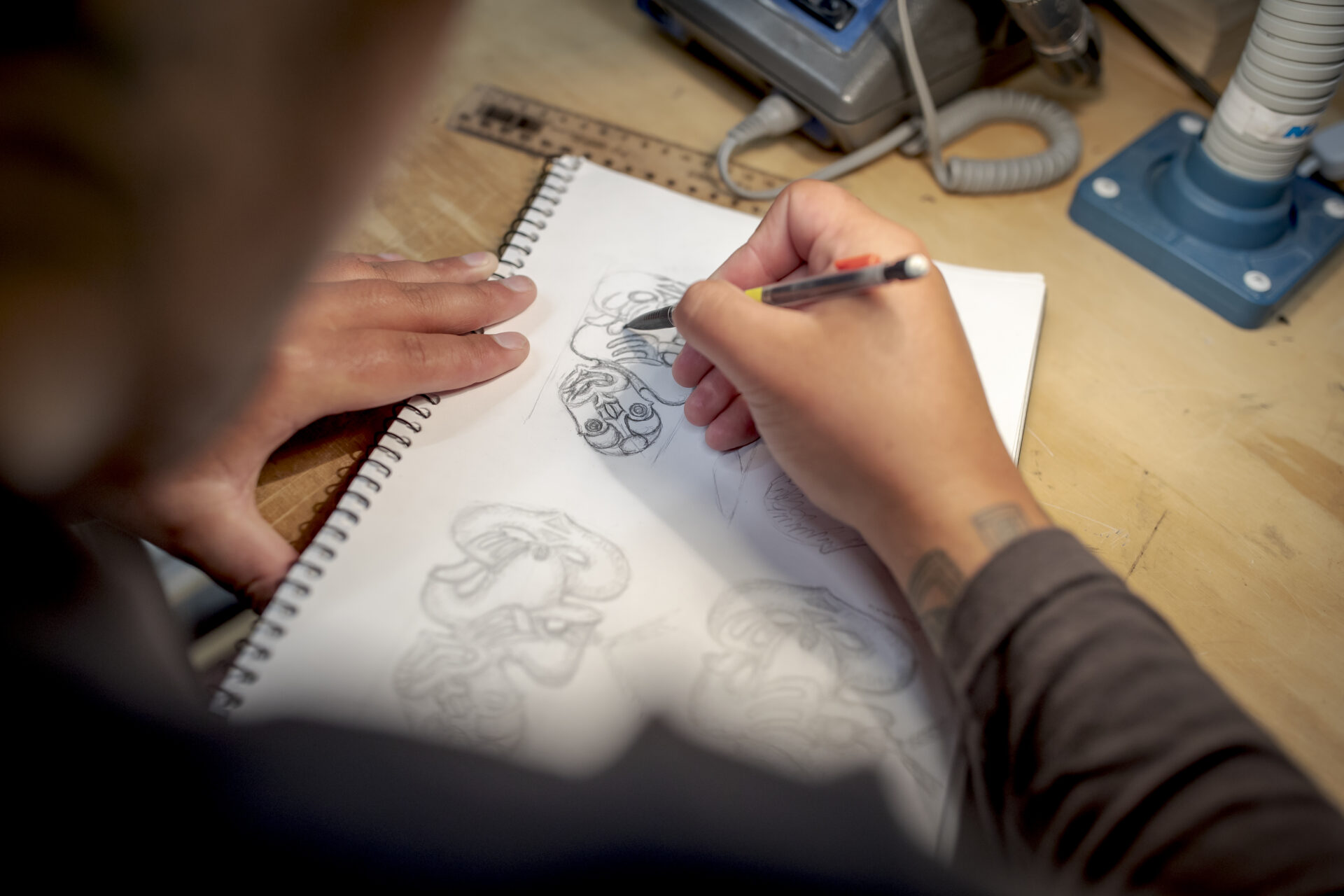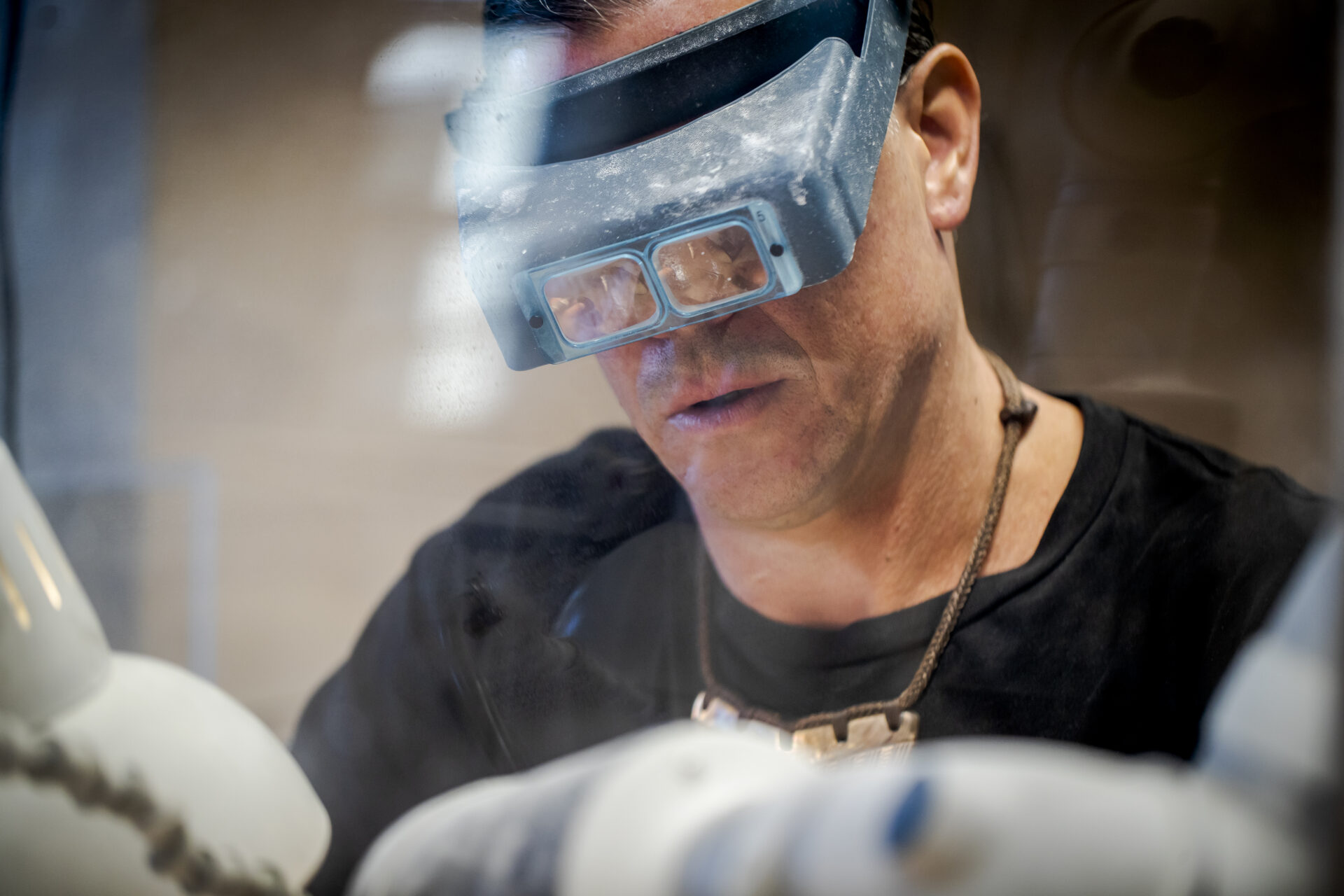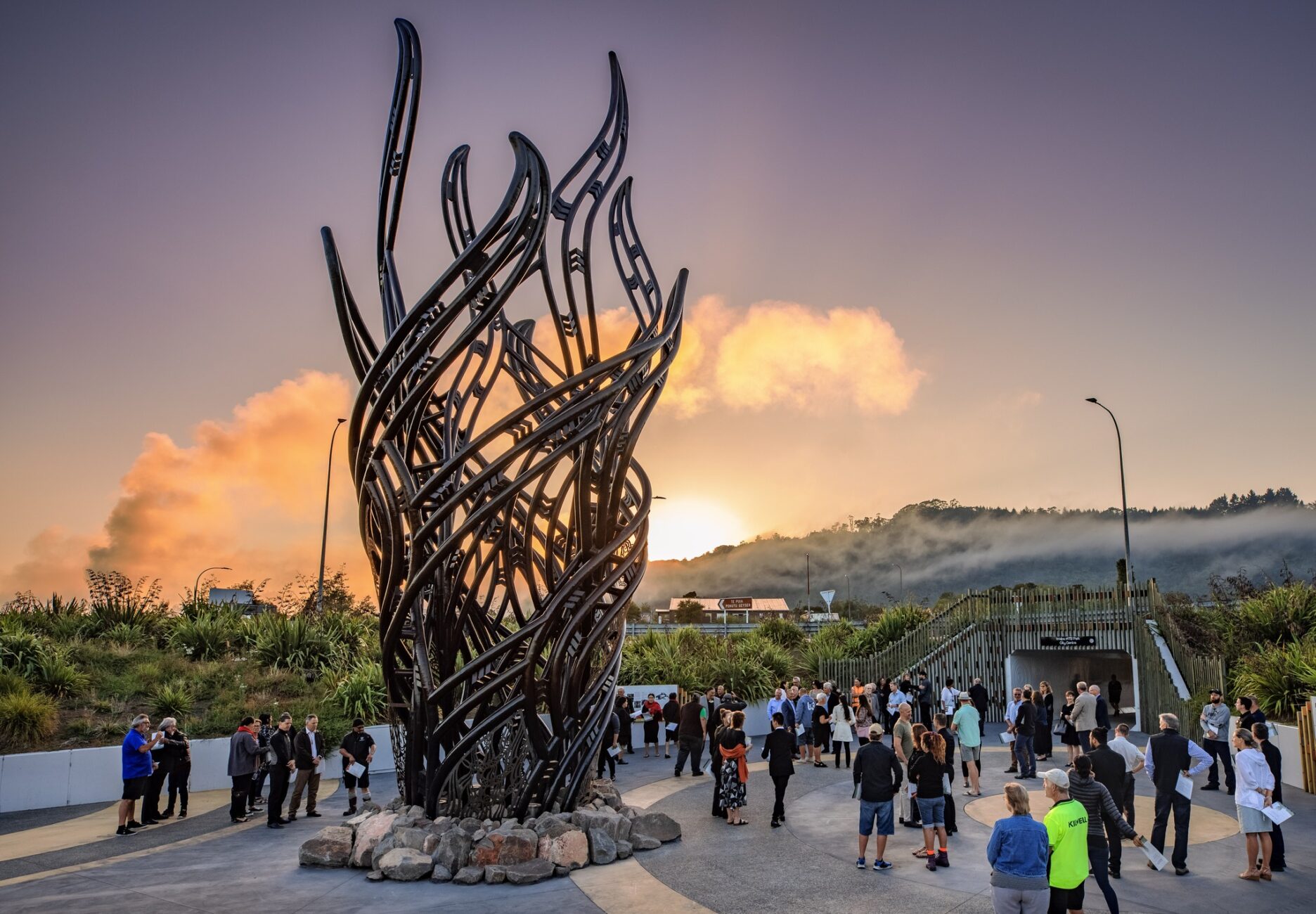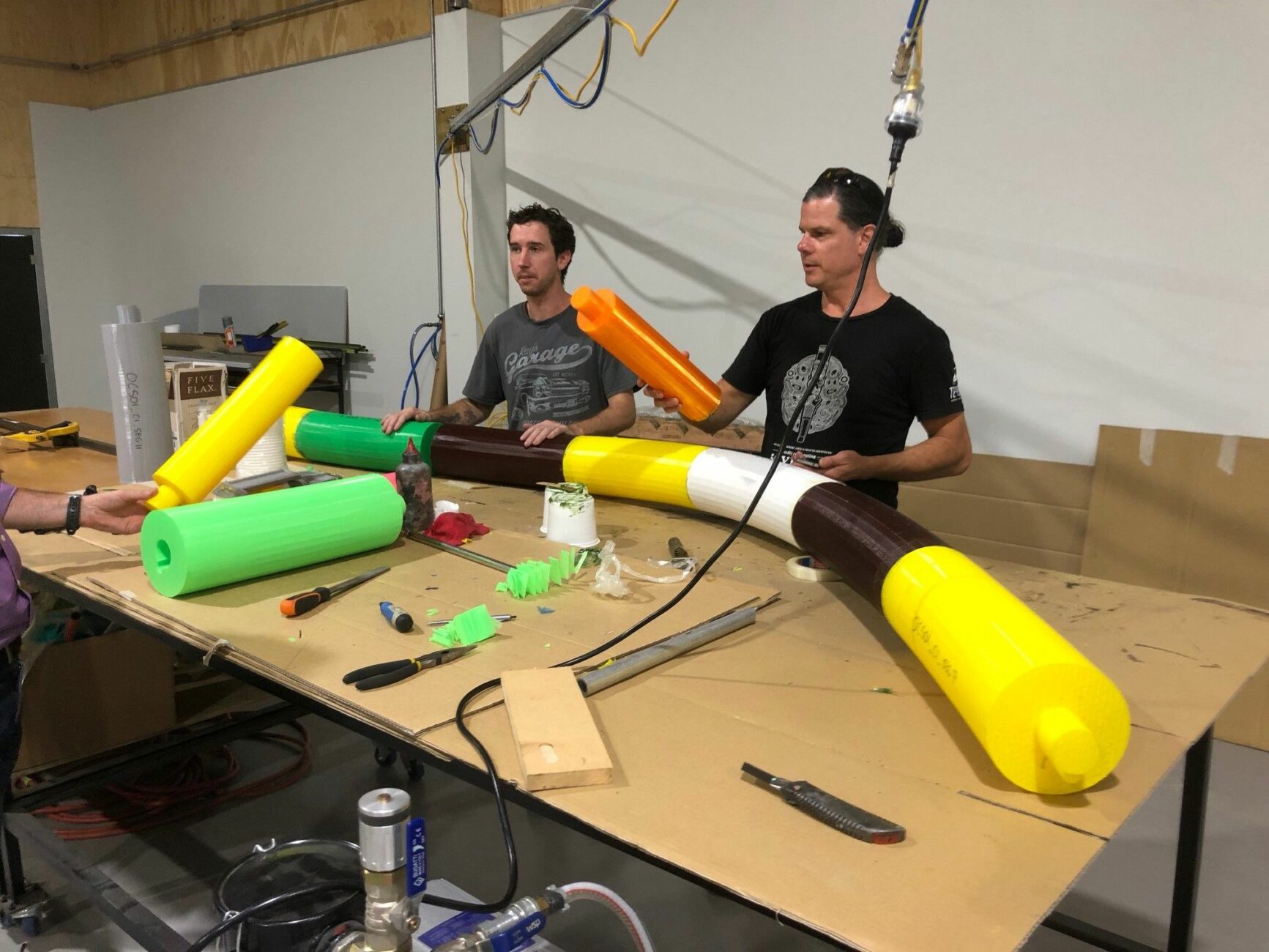Nau mai, haere mai ki Te Puia. Please check-in 15 minutes prior to your scheduled tour departure time.
Artists
|
Stacy Gordine
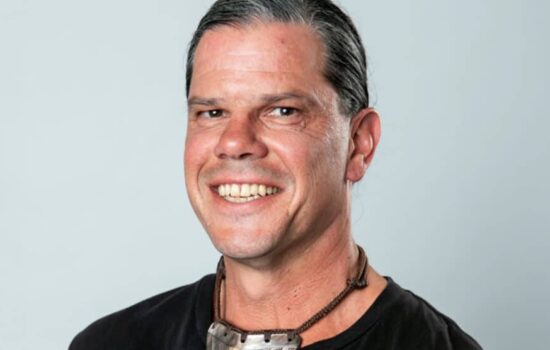
Stacy Gordine
Tumu (Head of Takapū)- Ngāti Porou
Wānanga
Description
Te Takapū o Rotowhio
Description
Stacy Gordine Te Takapū
Stacy works with multimedia, bone, pounamu (greenstone), stone, wood, silver and more. He became lead tutor of Te Takapū in September 2014. He holds a Diploma in Māori Visual Art and Design and has works held in Te Papa, Pātaka Museum and the Dowse Museum Collections, as well as private collections worldwide. Stacy’s background involves artist teaching and exchange residencies in Alaska and Hawai'i. His influences are Pacific Rim indigenous artisans past and present, as well as Great Grand Uncles Pine and Hone Te Kauru Taiapa.Stacy Gordine Te Takapū
Stacy works with multimedia, bone, pounamu (greenstone), stone, wood, silver and more. He became lead tutor of Te Takapū in September 2014. He holds a Diploma in Māori Visual Art and Design and has works held in Te Papa, Pātaka Museum and the Dowse Museum Collections, as well as private collections worldwide.
Stacy’s background involves artist teaching and exchange residencies in Alaska and Hawai’i. His influences are Pacific Rim indigenous artisans past and present, as well as Great Grand Uncles Pine and Hone Te Kauru Taiapa.
Their creations
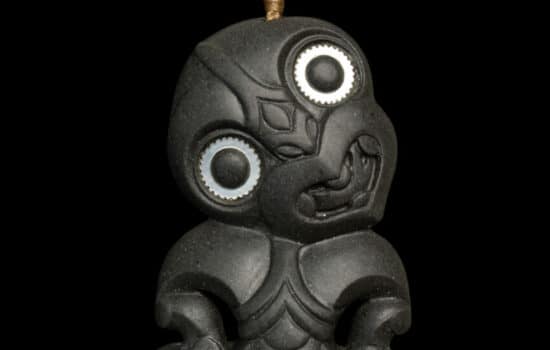
Sold
Hei Tiki
Hei tiki are the best known of all Māori adornments. Tiki are symbols of fertility that depict a new-born child. They are often family heirlooms bearing personal names and embodying their wearers lineage. As with most Māori personal adornments, hei tiki are often passed down generationally.
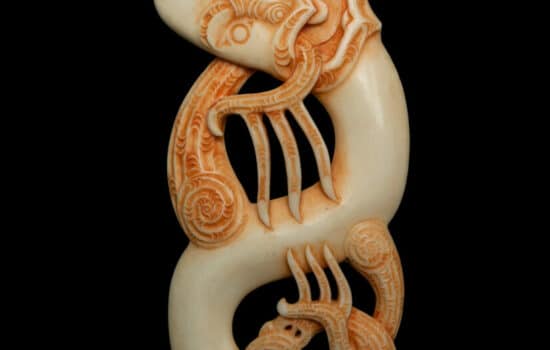
Sold
Marakihau
Marakihau were believed to harass and prey on shore-living people or sea-travellers. Some were said to be the spirits of departed men, an example being the famed chief Te Tahi, ancestor of the Awa people of Whakatane where a marakihau carving decorates a meeting house.
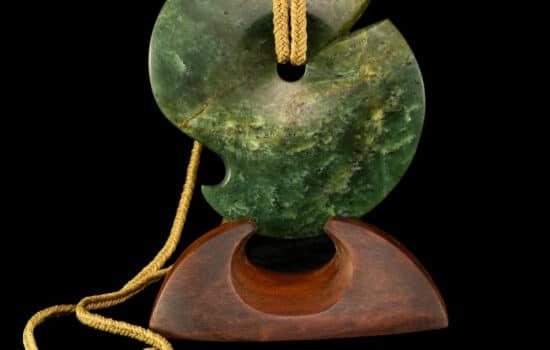
Porotaka Hei Matau
Coastal and river-based Māori tribes traditionally used a variety of fishhooks and lures. Hooks and lures varied in shape, material and design. Today hei matau (fishhooks) have become symbolic of traditional Māori technology and continue to symbolize a relationship to Tangaroa, God of the sea. Base Included.
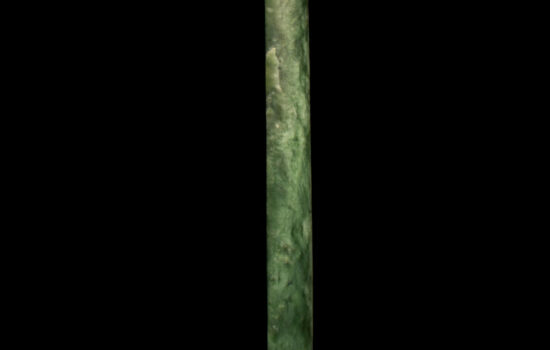
Sold
Kapeu
Kapeu are slender adornments with a slight bend at the bottom and were often worn as ear pendants. Kapeu were highly prized and a sign of high rank in Māori society. They are commonly also worn as neck pendants. As with many Māori personal adornments kapeu are often passed down generationally.
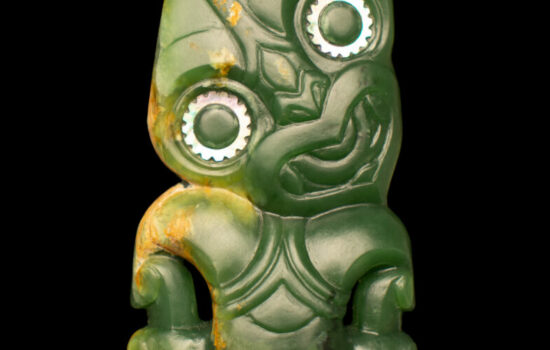
Sold
Hei Tiki
Hei tiki are the best known of all Māori adornments. Tiki are symbols of fertility that depict a new-born child. They are often family heirlooms bearing personal names and embodying their wearers lineage. As with most Māori personal adornments, hei tiki are often passed down generationally.
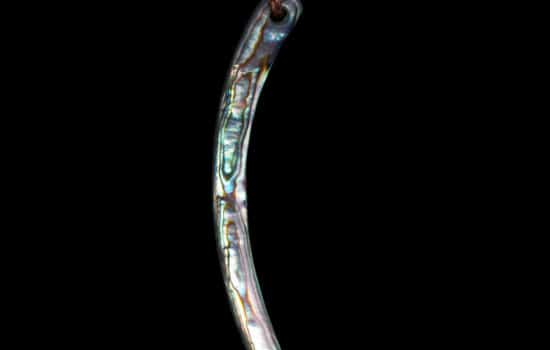
Sold
Autui Paua Shell
Autui were customarily used as a pin for fastening cloaks and may be made from bone, stone, wood or shell. They may also have been worn through the ear as an earring or around the neck as a pendant. Autui are still commonly worn as pendants and earrings and as with most Māori personal adornments, […]
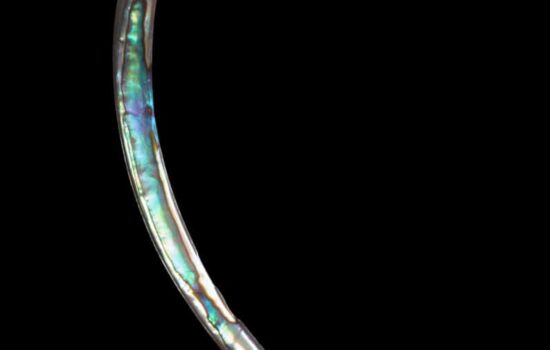
Sold
Autui Paua Shell
Autui were customarily used as a pin for fastening cloaks and may be made from bone, stone, wood or shell. They may also have been worn through the ear as an earring or around the neck as a pendant. Autui are still commonly worn as pendants and earrings and as with most Māori personal adornments, […]
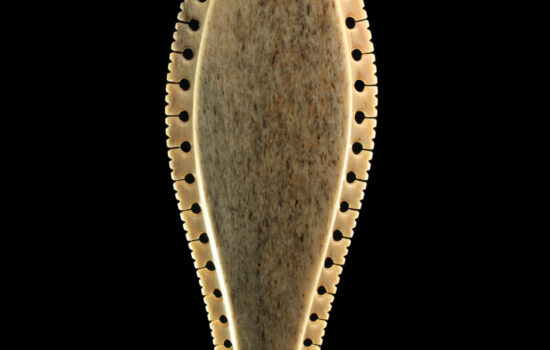
Sold
Hei Niho
The mark of a high Chief was one who wore the hei niho (whale tooth pendant), as the teeth of the sperm whale were highly prized because of their rarity. Usually these pendants had simply etched out eyes to form a head at one end. With actual whale teeth being such a rarity, it became […]
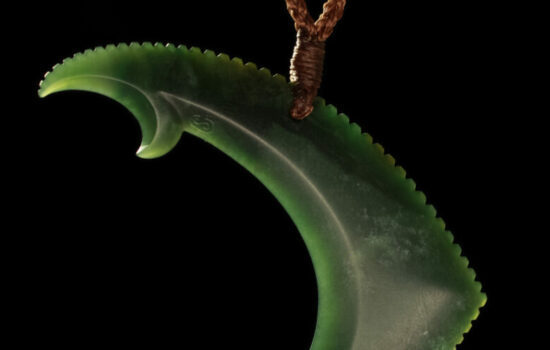
Sold
Hiku Mangō
Hiku mangō or sharks tail are used more as decretive piece within te aō māori (māori world). In ancestral times, different areas in Aotearoa (New Zealand) have their mythical stories on what the mangō meant in their time. In the Far North of the North Island of New Zealand the ocean taniwha ‘Ruamano’ took form […]
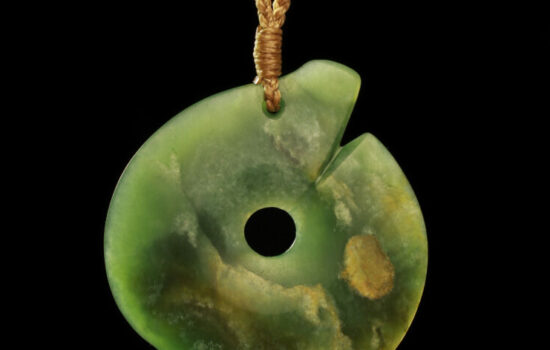
Sold
Hei Matau Porotaka
Coastal and river-based Māori tribes traditionally used a variety of fishhooks and lures. Hooks and lures varied in shape, material and design. Today hei matau (fishhooks) have become symbolic of traditional Māori technology and continue to symbolize a relationship to Tangaroa, God of the sea.
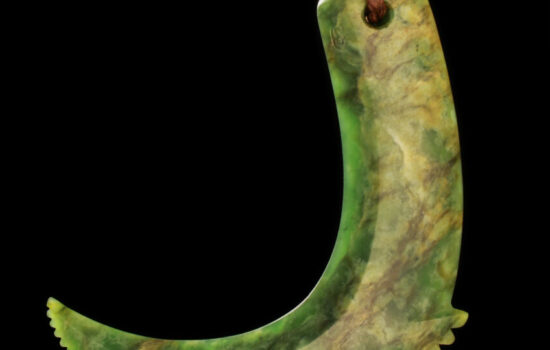
Sold
Niwha
Coastal and river-based Māori tribes traditionally used a variety of fishhooks and lures. Hooks and lures varied in shape, material and design. Today hei matau (fishhooks) have become symbolic of traditional Māori technology and continue to symbolize a relationship to Tangaroa, God of the sea.
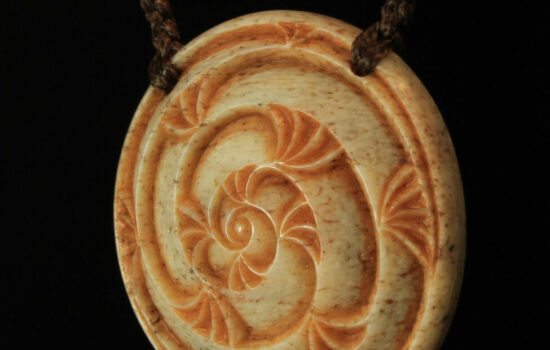
Sold
Whare Pungawerewere
“Ano he whare pungawerewere – it’s like a spider’s web”. This whakatauki or proverb is used to describe and compliment a fine piece of carving, likening the detail to that of a spider’s web.

